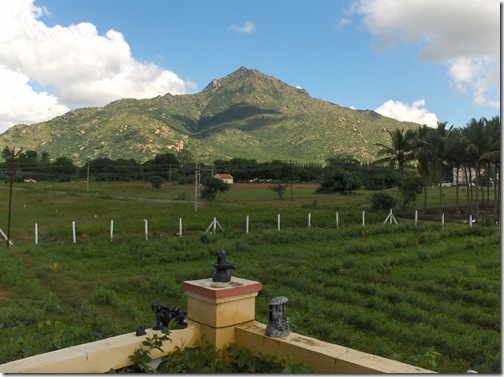
This is from a talk given by Ganesan on 22 January 2009
In 1923, intoxicated by spiritual fervour, G. RAMASWAMI PILLAI, ran away from the College without writing the final Degree examination. He came straight to Arunachala to spend quiet moments with Bhagavan Ramana. He had met the Maharshi at Skandashram in 1917 when he had completed school studies. He stayed for ten months in all peace, eventhough he had not spoken a single word with Sri Bhagavan. He went back to his native place, only to return to Sri Ramanasramam, and made it his permanent home ! The lustrous gardens of the Ashram, its cocoanut groves and the rock-path from the Ashram to Skandashram on the Hill will silently ever proclaim the greatness of Ramaswami Pillai !
He said : “ During my stay of those ten months at the Ashram, we often used to read the ‘Ribhu Gita’ . There would usually be six or seven of us, including Bhagavan, and we would each read a few verses in turn, going all the way through the book until we had finished it. Bhagavan used to tell us – and on occasions we also used to feel and experience it – that to read the ‘Ribhu Gita’ is to be in‘samadhi’ . Viswanathan, Muruganar, Chinna Swami and anyone else who was present would all squat together in a circle with Bhagavan and take it in turns to read. No other book was read so often!”
The ‘Ribhu Gita’ is the Tamil version of the sixth part of a large Sanskrit treatise : “Shiva Rahasya ” , consisting of 1924 verses. Centuries back, a great scholar-adept, Bhishu Sastri, also known as Ulaganatha Swami, translated it into Tamil verses. Lord Shiva gave upadesa to Sage Ribhu, which the Sage fully grasped and was established in the Supreme State of Self-Abidance. Sage Ribhu realizing the worth of that direct teaching, started preaching it to his earnest disciples.
The ‘Ribhu Gita’ contains that precious upadesa given to his chosen disciple, Nidaga, dealing with the Supreme Truth of the non-dual Brahman – the One without a second. Nidaga being a great intellectual was unable to grasp the direct teaching well enough to attain Self-Realisation; and, returned to his native town to practice ceremonial religion.Out of compassion for the beloved disciple, Sage Ribhu, one day disguised himself as a very old village rustic and went to Nidaga’s town. Finding the disciple engrossed in watching a Royal procession, Sage Ribhu enquired Nidaga as to what was the cause for the bustle. Not recognizing his Guru, Nidaga answered that the King was going in a procession.
“Oh ! It is the King! He goes in procession ! But where is the King ?”
“There, on the elephant,” answered Nidaga.
“You say the King is on the elephant. Yes ! I see the two,” said the rustic, “but, which is the King and which is the elephant ? “
“What !” exclaimed Nidaga. “You see the two, but do not know that the man above is the King and the animal below is the elephant ? What is the use of talking to a man like you ?”
“But,” persisted the rustic, “you said ‘above’ and ‘below’ – what do they mean ?”
“You see the King and the elephant, the one above and the other below, and yet you want to know what is ‘above’ and ‘below’ ? “ shouted Nidaga, losing all patience.
“Bend forward and I will show you !”
The old rustic did as he was told, and Nidaga got on his shoulders, saying, “Know it now. I am above as the King, and you are below as the elephant. Is that now clear to you ?”
“No, not yet,” answered the rustic. “The ‘King’, the ‘elephant’, ‘above’, ‘below’ –- are all very clear now.
But pray, tell me what do you mean by “I ” and “You ” ? ”
When Nidaga was thus suddenly confronted with the problem of defining the “You ” apart from the “I ”, Realisation of the Supreme Truth dawned on him.
Jumping down, Nidaga fell at his Master Ribhu’s feet, saying, “Who but my venerable Guru Ribhu could have thus drawn my mind from the superficialities of mundane, physical existence to the True Being of the Supreme Self ! “
*****************************************************
Bhagavan Ramana used to say that the chanting of the ‘Ribhu Gita’ was itself sufficient to induce in the mind the direct perception of the Supreme Truth.
We owe a deep sense of gratitude to an old devotee of Sri Bhagavan who was plunged in its study and who was guided by Bhagavan for making a short version for daily chanting.In fact, he made three varieties of selection. First, he selected eight verses from out of 1924 total verses; then 27 verses and finally, 122 verses. He got the stamp of approval for doing so from Bhagavan. In 1980, when he was staying at the Ashram, for the benefit of those who do not know Tamil, he translated the 122 verses-selection into English, which was published, with the title : “The Essence of Ribhu Gita”, by the Ashram.
Who is this fortunate devotee ?
Prof. N.R. Krishnamurti Aiyar , Physics Professor, had his first ‘darshan of Bhagavan Ramana when he was a schoolboy of sixteen years. The steady look that Bhagavan gave him at that tender age, he cherished all his life. But, as a result of his extensive studies in modern science, he became an atheist. He was convinced that the existence of evil and misery in the world was incompatible with the existence of a benevolent God !
So, when he came to see Sri Bhagavan in 1923, he put the following question to him : “You are now in this state [ stiti] . What will be your future stiti (meaning, state after death) ?” Bhagavan did not reply immediately, but merely looked at him steadily for a long time. Bhagavan put him a counter question :
“You say stiti [ state ] . What exactly do you mean by that ?”
Prof.N.R.K. at first thought that Bhagavan was through silence evading his question. But, when he heard his counter question, he began to think. He knew that ‘stiti’ could not apply to the body, which is either burnt or buried. But, if he said that he meant the ‘mind’ , Bhagavan would turn round and ask him to define the mind, which he could not easily do. All the while, Bhagavan was looking at him silently and steadily. The Professor could not stand that penetrating look.
He lost his sense of body-consciousness. He was not conscious of his body or the world outside. After some time, when he regained his original poise, he fully prostrated to Bhagavan and shed tears of joy ! From that moment onwards he surrendered himself completely to Sri Bhagavan. He became a “permanent slave of Bhagavan”, as he put it ! From then on, every minute of his stay with Bhagavan became very precious, extraordinarily important and fully meaningful.
During such stays at the Ashram, he noticed the importance given for the reading of the ‘Ribhu Gita’, in which Bhagavan too was fully involved. He heard Bhagavan say that the very recital itself of the ‘Ribhu Gita’ led one to spontaneous abidance in the Self. Prof.N.R.K. told V. Ganesan that Bhagavan encouraged him to study the ‘Ribhu Gita’ as hissadhana (spiritual practice).
Being a brilliant Physicist he admired the scientific precision and logical accuracy of the text. As he was an advanced spiritual adept as well, he could strike a remarkable balance between science and spirituality – not just theoretically but practically too.
As sincere aspirants, we owe a deep sense of debt and gratitude to Prof.N.R. Krishnamurti Aiyar for the great precision and spiritual insight with which he has been able to capture the essence of the original text.
* * * * * * * * * * * * * * *
We will be ‘sharing’ in the course of a few sessions, the beauty, brilliance and beatitude of the ‘Ribhu Gita’ .
Let us begin with a benedictory prayer, so devotedly voiced by Sage Ribhu :
Salutations to that Sat-Chit-Ananda, the SELF.
Salutations to that undisturbed Peace, the SELF.
Salutations to that integral Perfection, the SELF.
Salutations to that eternal Awareness, the SELF.
Salutations to that qualityless, blemish-free SELF.
Salutations to that indivisible Unity, the SELF
Salutations to that pure Sky of Consciousness, the SELF
Salutations to that Supreme Integral Existence, the SELF.
************************************************
Related post: Satsang with Ganesan
V. Ganesan Bio
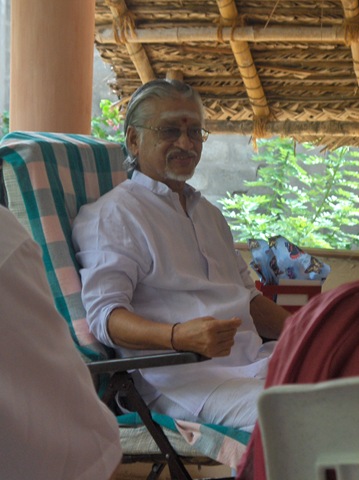
Born in 1936, up to the age of 14 years old, Ganesan grew up in the presence and proximity of Bhagavan Sri Ramana Maharshi. His sacred memory of the Great Master is rich in its content; and, even at that tender age he could see Sri Ramana as the greatest compassionate human being.
On April 14, 1950 – the day the Great Master chose to leave the body – the adolescent Ganesan stood near the entrance to the room where Sri Ramana was lying and was fortunate to witness the brilliant flash of Light that later moved towards the top of the Holy Hill – Arunachala.
Ganesan obtained a Master’s Degree in Philosophy; and, then came to stay permanently at “Sri Ramanasramam,Tiruvannamalai” – the sacred abode of Sri Ramana Maharshi – taking care of the
Old Devotees of Sri Ramana. He did it as his sole sadhana (spiritual practice). In that way, he collected the reminiscences of Sri Maharshi from those Old Devotees which have never before been recorded.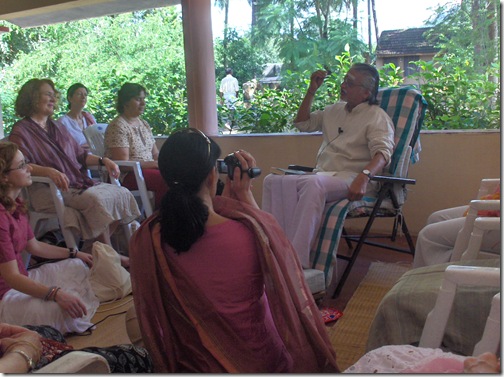
His close contacts with sages and saints, including Swami Ramdas, Mother Krishnabai, J. Krishnamurti, Nisargadatta Maharaj and Yogi Ramsuratkumar, he says, have deepened and widened hisunderstanding of the ‘Direct Teaching’ of the Maharshi. However, he feels himself to be an insignificant ‘dust’ at the Holy Feet of Bhagavan Ramana.
He has travelled widely and spread the ‘Direct Teaching’ of Sri Ramana Maharshi, in its prestine purity, wherever he was invited to give talks.
He has authored a few books on the life and teaching of Bhagavan Ramana. Among others, “Purushothama Ramana”, “Be the Self”, “Moments Remembered”, “Direct Teaching of Bhagavan Ramana” and “Practising Self-Enquiry” , are very popular.
At the veranda of his cottage – “Ananda Ramana” – he meets earnest seekers, every Monday and Thursday, between 9.30 and 11 a.m., sharing with them the spiritual treasure entrusted with him by all these holy and sacred souls.
On April 14, 1950 – the day the Great Master chose to leave the body – the adolescent Ganesan stood near the entrance to the room where Sri Ramana was lying and was fortunate to witness the brilliant flash of Light that later moved towards the top of the Holy Hill – Arunachala.
Ganesan obtained a Master’s Degree in Philosophy; and, then came to stay permanently at “Sri Ramanasramam,Tiruvannamalai” – the sacred abode of Sri Ramana Maharshi – taking care of the
Old Devotees of Sri Ramana. He did it as his sole sadhana (spiritual practice). In that way, he collected the reminiscences of Sri Maharshi from those Old Devotees which have never before been recorded.

His close contacts with sages and saints, including Swami Ramdas, Mother Krishnabai, J. Krishnamurti, Nisargadatta Maharaj and Yogi Ramsuratkumar, he says, have deepened and widened hisunderstanding of the ‘Direct Teaching’ of the Maharshi. However, he feels himself to be an insignificant ‘dust’ at the Holy Feet of Bhagavan Ramana.
He has travelled widely and spread the ‘Direct Teaching’ of Sri Ramana Maharshi, in its prestine purity, wherever he was invited to give talks.
He has authored a few books on the life and teaching of Bhagavan Ramana. Among others, “Purushothama Ramana”, “Be the Self”, “Moments Remembered”, “Direct Teaching of Bhagavan Ramana” and “Practising Self-Enquiry” , are very popular.
At the veranda of his cottage – “Ananda Ramana” – he meets earnest seekers, every Monday and Thursday, between 9.30 and 11 a.m., sharing with them the spiritual treasure entrusted with him by all these holy and sacred souls.

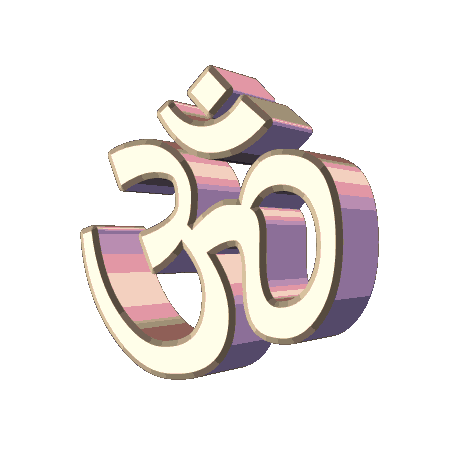


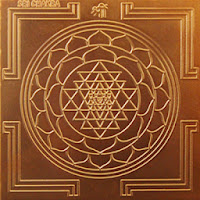





 ஒருவன் சிவனடியார்களைத் துதித்து, அவர்களுக்கு வேண்டிய அனைத்து உபசாரங்களையும் செய்து வந்தால், மறு பிறவியில், சீகண்ட யோகத்தில் பிறந்து, ருத்ராக்ஷம் தரித்து, திருநீறு பூசி, அனவரதமும் சிவத் தியானத்தைச் செய்து, சைவ சித்தாந்தப்படி விரதங்களை அனுஷ்டித்து, சாதுக்களை உபசரித்து, சிவனையே முழுமுதல் கடவுளாகக் கொண்டு, மக்களால் மகாத்மா என்று துதிக்கப்பட்டு, மறு ஜன்மம் இல்லாத சிவபதம் அடைவான்.
ஒருவன் சிவனடியார்களைத் துதித்து, அவர்களுக்கு வேண்டிய அனைத்து உபசாரங்களையும் செய்து வந்தால், மறு பிறவியில், சீகண்ட யோகத்தில் பிறந்து, ருத்ராக்ஷம் தரித்து, திருநீறு பூசி, அனவரதமும் சிவத் தியானத்தைச் செய்து, சைவ சித்தாந்தப்படி விரதங்களை அனுஷ்டித்து, சாதுக்களை உபசரித்து, சிவனையே முழுமுதல் கடவுளாகக் கொண்டு, மக்களால் மகாத்மா என்று துதிக்கப்பட்டு, மறு ஜன்மம் இல்லாத சிவபதம் அடைவான். ஒருவன் நாராயணனையே முழு முதல் கடவுளாகக் கொண்டு, வைணவ அடியார்களை நன்கு உபசரித்து, அவர்களுக்குத் தேவையான சேவைகளைச் செய்து வந்தால் மறு பிறவியில் ஸ்ரீ நாத யோகத்தில் பிறந்து, நாராயணின் திருச் சின்னங்களைத் தரித்து, நாராயணன் ஒருவனையே தியானித்து, நல்ல குடும்பம், மனைவி, மக்கள், செல்வம் பெற்று அனைவராலும் கொண்டாடப் பட்டு, மறு ஜன்மம் இல்லாத பரமபதம் அடைவான்.
ஒருவன் நாராயணனையே முழு முதல் கடவுளாகக் கொண்டு, வைணவ அடியார்களை நன்கு உபசரித்து, அவர்களுக்குத் தேவையான சேவைகளைச் செய்து வந்தால் மறு பிறவியில் ஸ்ரீ நாத யோகத்தில் பிறந்து, நாராயணின் திருச் சின்னங்களைத் தரித்து, நாராயணன் ஒருவனையே தியானித்து, நல்ல குடும்பம், மனைவி, மக்கள், செல்வம் பெற்று அனைவராலும் கொண்டாடப் பட்டு, மறு ஜன்மம் இல்லாத பரமபதம் அடைவான்.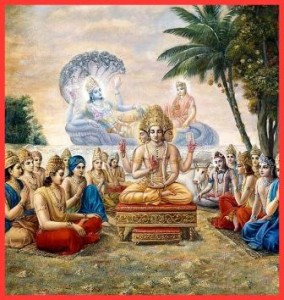 ஒருவன் வேதம் கற்ற பிராமணர்களைப் போஷித்து, வைதீக காரியங்களுக்கு உறுதுணையாக இருந்தால், மறு பிறவியில் விருஞ்சி யோகத்தில் பிறந்து, பிரம்ம ஞானமும், அறிவும் பெற்று, நல்ல குடும்பம், மனைவி, குழந்தைகளைப் பெற்று, சிறந்த சீடர்களைப் பெற்று, ச்ரேஷ்டன் என்று பெயர் பெற்று, பிரம்ம தேஜசுடன் ஜொலித்து, மறு ஜன்மம் இல்லாத பிரம்ம லோகம் அடைவான்.
ஒருவன் வேதம் கற்ற பிராமணர்களைப் போஷித்து, வைதீக காரியங்களுக்கு உறுதுணையாக இருந்தால், மறு பிறவியில் விருஞ்சி யோகத்தில் பிறந்து, பிரம்ம ஞானமும், அறிவும் பெற்று, நல்ல குடும்பம், மனைவி, குழந்தைகளைப் பெற்று, சிறந்த சீடர்களைப் பெற்று, ச்ரேஷ்டன் என்று பெயர் பெற்று, பிரம்ம தேஜசுடன் ஜொலித்து, மறு ஜன்மம் இல்லாத பிரம்ம லோகம் அடைவான்.


